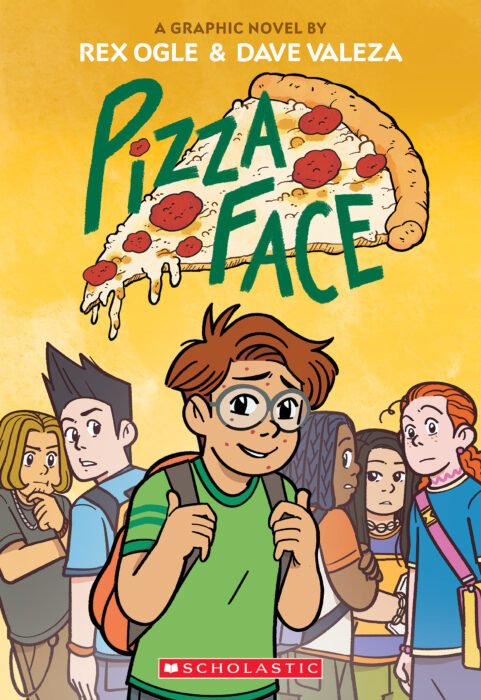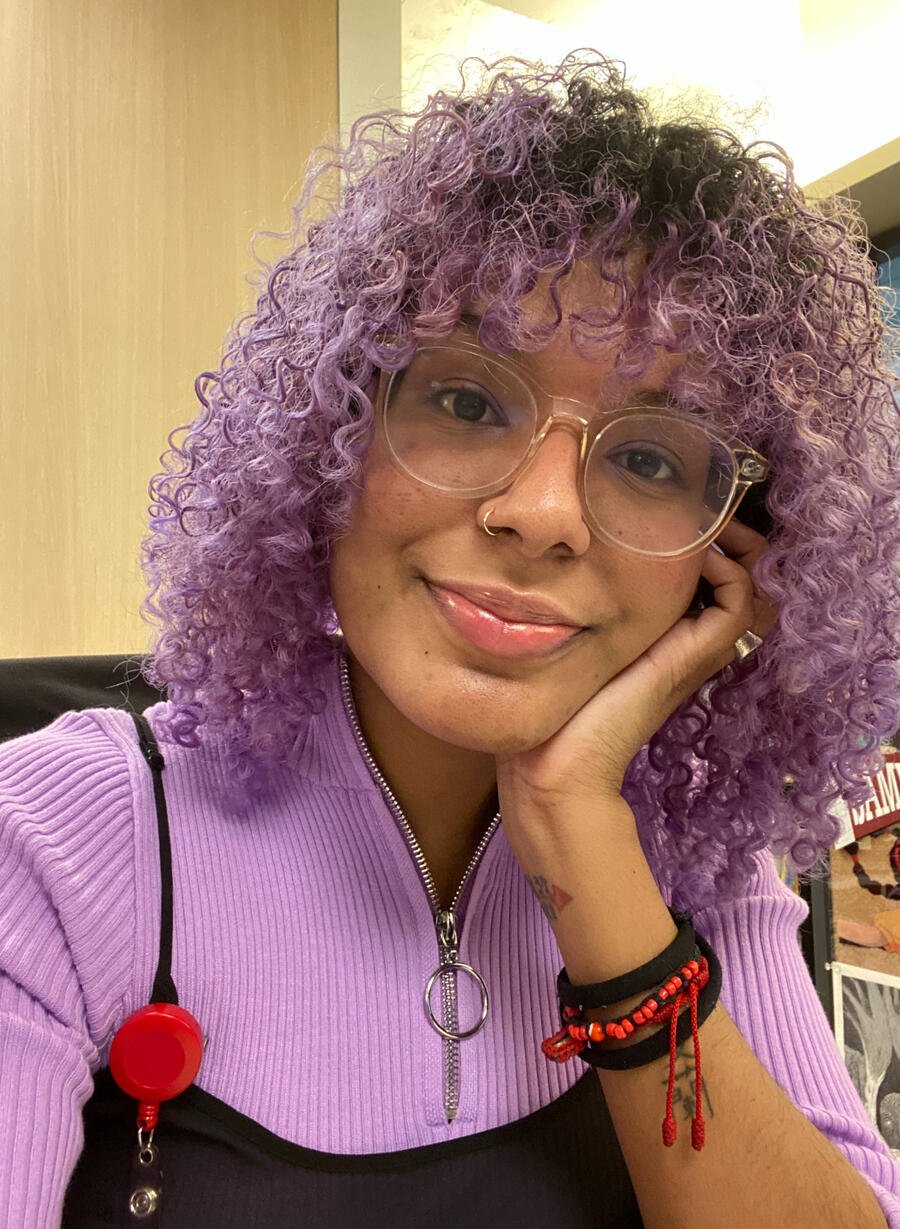“On breathtaking mountains, where coffee beans grow, I carry my friends to the green hills below. I drive through the Andes, so windy and steep. Me llamo La Chiva. That’s me! Beep, beep, beep!”
With its vibrant opening, I Am La Chiva: The Colorful Bus of the Andes demands your attention. The joyful picture book by debut author Karol Hernández and illustrator Lorena Alvarez Gómez transports readers through the rugged Andes mountains on a chiva. La chiva is the name used for artisan rustic buses used widely for public transport in rural Colombia.
The idea to write about the iconic bus came to Hernández when her son mistook her ceramic miniature chiva for a school bus. She searched for picture books about it, but couldn’t find any. So she decided to write one.
Out on July 9 from Dial Books for Young Readers, I Am La Chiva is a cheerful rhyming book told from the perspective of la chiva. The bus picks up its passengers one by one – including people with produce, and even animals. Readers meet Doña Ines with her curious hen and warm arepas, and Don Ernesto with his pig named Chanchito. On the way to the town center, la chiva hits a small snag which makes for some added excitement to the story.
Alvarez Gómez, who is from Colombia’s capital, Bogotá, uses a rich color palette to illustrate the beauty of rural Colombia. Much like real-life chivas, the chiva centered in this book is intricately decorated in swoops of teal, purple, orange, and more. There is an incredible amount of detail in the spreads, which is sure to make young readers linger longer on each page.
The Spanish translation of the book, titled ¡Me llamo la Chiva!: El colorido bus de los Andes, will be released on Aug. 27.
In anticipation of her debut book’s release, Hernández spoke with Latinx in Publishing about revisiting la chiva for readers, the inspiration behind her characters, and more.
This interview has been edited for clarity and brevity.
Amaris Castillo (AC): Congratulations on I Am La Chiva. I know you were born and raised in Colombia and I understand you were 13 when your family left. What inspired you to write this book?
Karol Hernández (KH): La Chiva is an answer to a question. During the pandemic, I was taking a picture of my little ceramic chiva, and my son – who was three years old at the time – approached me and said, “What a cute school bus.” And I was like, “No, this is not a school bus.” I tried to explain the role of chiva buses in Latin countries, but I didn’t feel that the concept quite clicked. So I went to look for a picture book on the topic. I didn’t find one, so I wrote the story originally for him.
Because my kids were born in Tennessee, we were getting all these awesome picture books from the Imagination Library. And I just made the connection. I was like, This story kind of reads like something I would see in a book – like the ones I get from the Imagination Library. And that sparked the idea of turning the story that I wrote for him into a picture book for a broader audience.
AC: For those who don’t know, what is a chiva?
KH: A chiva bus kind of looks like the body of a school bus, if you will, except that it has pew-style seating, no buckles, no windows. This is like an open bus, and it’s used to transport people in rugged terrain. Our story takes place in Colombia, in the Andes Mountains, so that’s where our chiva travels in the story.
The buses are very beautifully decorated. They’re painted by hand by artisans. And when you ride on a chiva, you could be riding next to people, produce, plantains, coffee, chickens, pigs, dogs, you name it. And people. Things are also put on top of la chiva, which you can appreciate in the illustrations.
“Chiva” literally means “goat.” One of my kids said, “Oh, of course, because it’s the greatest of all time,” and I should have made that connection myself. But “chiva” means “goat,” and that is because back in the 1930s when chivas were first introduced to Colombia, their horns sounded like a goat. And so farmers would refer to it as la chiva. Nowadays you can also find chivas in touristic centers in Colombia and in some major cities in the US, as party buses.
“ I tried to explain the role of chiva buses in Latin countries, but I didn’t feel that the concept quite clicked. So I went to look for a picture book on the topic. I didn’t find one, so I wrote the story originally for him. ”
AC: You begin the book by saying “On breathtaking mountains, where coffee beans grow, I carry my friends to the green hills below. I drive through the Andes, so windy and steep. Me llamo La Chiva. That’s me! Beep, beep, beep!” I love that the entire book is told from the perspective of la chiva. How did you decide to tell the story this way?
KH: When I sat down to write the story, I closed my eyes and started recalling vignettes from my childhood, and vignettes from my landscapes and experiences I had as a kid in Colombia… Two stanzas in, I realized that I was la chiva. And so, “I am La Chiva. It’s me.”
I don’t know why it felt so natural to write it that way, but a lot of the characters that we meet along the way represent real people in my childhood. I didn’t live in a small rural town. I lived in a city, but we would go to a small rural town to get together with our family in la finca. And so I did these journeys, and it felt so natural to narrate it in first person as if I were the bus.
AC: La Chiva plays an important role in this book. Here is where Doña Ines boards with her curious hen, and Don Ernesto arrives with his pig, Chanchito. How did you come up with all these characters?
KH: In Colombia, we call it la cuadra – the block. So in the block where I grew up, we had Nancy, who was the lady who made arepas. Nancy was a fixture in my childhood, so I thought, Well, I need to include the lady who makes arepas because she was part of my childhood. Nancy didn’t work (for the book) because of the meters, so I went with Doña Ines. And I wanted to introduce the word “Doña.”
Funny enough, Nancy’s family had a pig. We would all bring our scraps throughout the year, and they’d feed the pig. You can imagine what happened with that pig at the end of the year, for Christmas time. But I wanted to include a pig (in the book), although Chanchito does not meet that fate in the story. That was decided by my children… These were just people who made an impression in my life as a young kid because of what they did. What they did was relevant to my experience of people and culture, and they did it with such joy and pride. I wanted to communicate that these people, everything they did, they did with joy and with pride in service of their community.
AC: I want to ask you about the illustrations by Lorena Alvarez Gómez. They were just so beautiful. I love the color choices. Was there any collaboration with her for this project?
KH: There was incredible collaboration between Nancy Mercado, our editor at Dial, Lorena, and myself. I think that what made this very natural and easy is the fact that Lorena is Colombian as well. She actually lives in Colombia. When Nancy shared the manuscript with her, I think she immediately got the vision, made it her own, and she was graceful enough not just to do an incredible job, but she also included little Easter eggs for my kids, which was awesome because now they feel that the physical book is theirs. And they’re so proud to show people. She elevated this book to a place that I could not have imagined.
The creative team behind this book is all Colombian American, and I think it gives it incredible authenticity and a level of detail that you probably can’t get from just looking at pictures and doing research. I think it shows that the team behind the book has experienced the Colombian Andes, and knows the place and function of a chiva in Colombian society and culture.
AC: What are you hoping readers take away from I Am La Chiva?
KH: I have a couple of big dreams for the book. One, I hope that this book serves as a gateway for people to want to learn more about the Andes. Not just Colombia, but the Andes Mountains; the Andes are the longest mountain range in the world, and they cross seven countries. And along the ridges of these mountains, there’s incredible diversity of culture, food, music, textiles, flora, fauna, Indigenous communities. Our story takes place in Colombia, but Colombia is one link in this chain of culture that crosses a continent.
Secondly, as a first-generation Colombian in the States, I remember when I moved here as a teenager and would tell people that I was Colombian, usually the first response I got was that I probably was related to Pablo Escobar. While I get that that was a joke, it was a painful joke. Because I was 13 years old and couldn’t understand how, at the time, the 32 million people in Colombia could be reduced to one story. As I mentioned earlier, I grew up surrounded by hardworking people who did what they did with joy, with pride. We weren’t perfect, but within our imperfection there was so much beauty.
With time, I learned to redirect conversations by saying, ‘No, we make wonderful coffee. And have you heard of Shakira? Have you heard of Carlos Vives? And have you seen las gorditas de (Fernando) Botero?’ I was able to rely on people’s art to create a different narrative. Now I want to contribute to the stories that are told about Colombia abroad, because there’s so much to our countries – not just Colombia. And so I feel like it’s taking power back by telling a different story.
Karol Hernández was born and raised in Colombia. She currently lives in Florida with her husband, three kids, two dogs, and a fish. https://karolitadotcom.wordpress.com/
Amaris Castillo is an award-winning journalist, writer, and the creator of Bodega Stories, a series featuring real stories from the corner store. Her writing has appeared in La Galería Magazine, Aster(ix) Journal, Spanglish Voces, PALABRITAS, Dominican Moms Be Like… (part of the Dominican Writers Association’s #DWACuenticos chapbook series), and most recently Quislaona: A Dominican Fantasy Anthology and Sana, Sana: Latinx Pain and Radical Visions for Healing and Justice. Her short story, “El Don,” was a prize finalist for the 2022 Elizabeth Nunez Caribbean-American Writers’ Prize by the Brooklyn Caribbean Literary Festival. She is a proud member of Latinx in Publishing’s Writers Mentorship Class of 2023 and lives in Florida with her family.
































